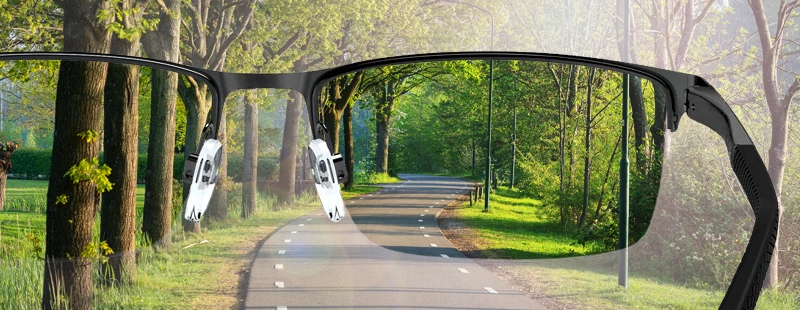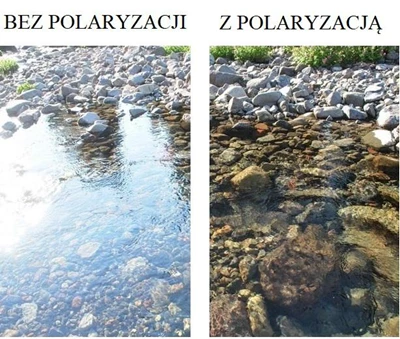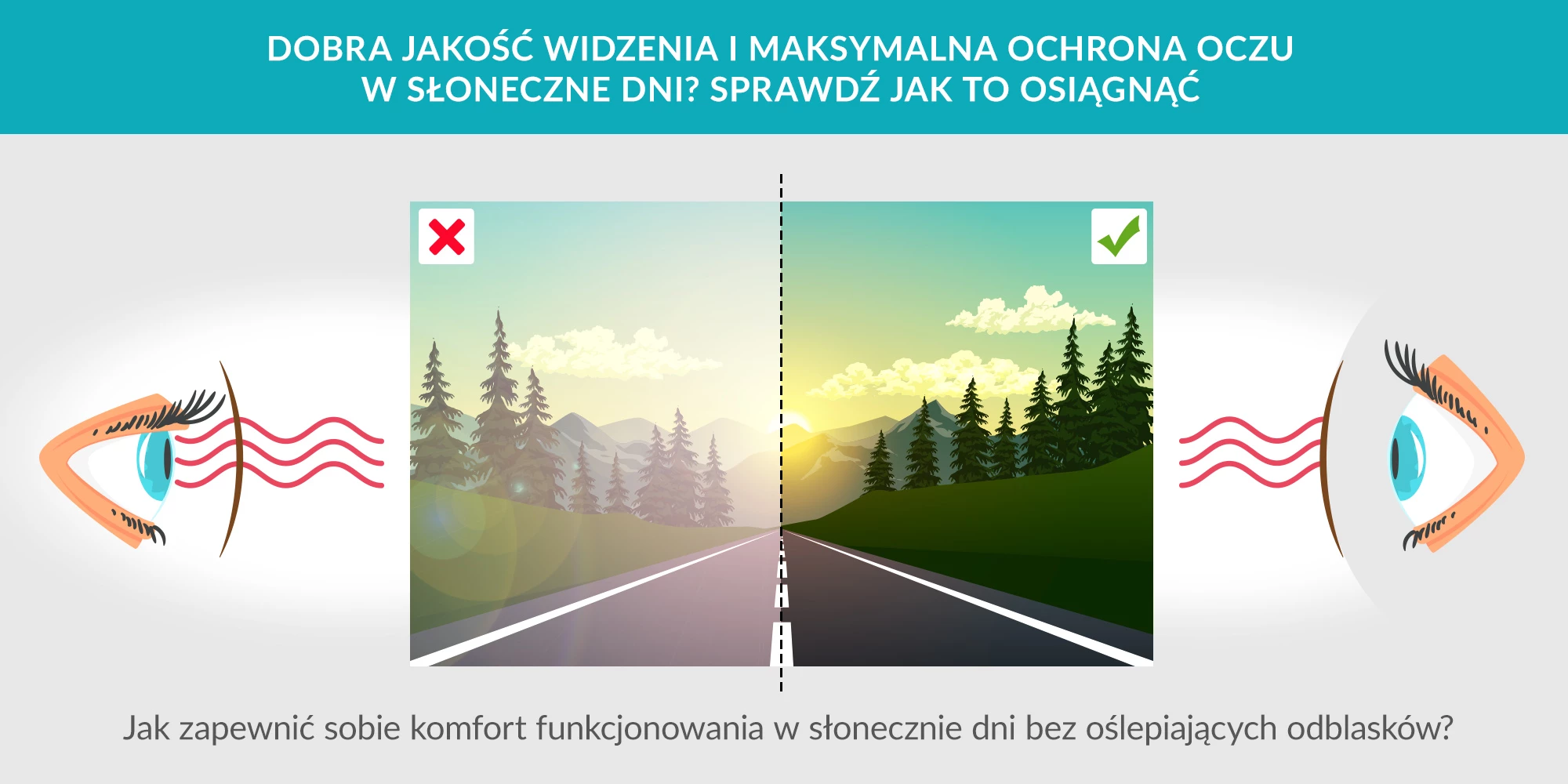
We have a choice
Nowadays sunglasses are not only a source of protection against harmful UV rays, but they can also be a great styling accessory. They accompany us practically all year round, and their use is not limited to sunny holidays. Sunglasses frames can range from the classic to the highly original proposed by the biggest fashion designers.
The variety also applies to the spectacle lenses used in sunglasses - they can take on different tints, be characterised by homogeneity, vary gradation in the level of tint or even stand out with a mirror effect. A professional optician or optometrist will tell you how to choose lenses for your glasses.
Eye protection, which is so crucial for our functioning, can also be provided in various ways. Today we have a whole range of solutions available, and we can choose, for example:
- sunglasses
- corrective glasses with tinted lenses
- corrective glasses with additional sun protection overlay
- glasses with photochromic (blackout) lenses
- contact lenses in combination with sunglasses
There are several categories of protection, including tints, various anti-reflective coatings and polarisation. Only with the latter option can we speak of full protection from sunlight. The choice of glasses and their design depend on the function to be performed and the conditions in which they will be used.
This time we will discuss in detail the role of polarisation in sunglasses.
Touch of physics
The sunlight we encounter every day is - from a physical point of view - a transverse electromagnetic wave in the visible spectrum. Light rays in nature can propagate in different ways and reflect off any structure. It is reflections like these that can cause a dazzling effect even in tinted spectacle lenses. Figure 2.1 shows a diagram of how classic lenses and those with polarisation work.
Polarisation is designed to order and extinguish reflected rays to ensure clear vision without any light reflections.
Driving
When travelling by car on a sunny day, a driver is exposed to glaring reflections from various surfaces such as hot asphalt or bodywork and windows of passing cars. The presence of such glare significantly reduces driving comfort, quickly leads to fatigue, headaches and impairs concentration. To drive safely, a driver must be able to see clearly and without distortion. Bright light reflected from smooth surfaces could lead to a reduction of the driver's field of vision, to glaring the driver, and consequently to an accident. Figure 3.1 shows a simulation of vision through lenses with and without polarisation.

Rys.3.1. Simulation of road vision with non-polarised and polarised glasses
Polarised sunglass lenses improve contrast, provide superior visual clarity and ensure correct and natural colour perception. They protect from the "asphalt blur" effect and the driver can clearly see everything on the road. If necessary, the driver can react quickly enough. Getting polarised glasses also solves the problem of constant squinting while driving and makes journeys not only safer, but also much more pleasant.
By the water
Sometimes, when spending time by the water, deep relaxation is hampered by intense UV radiation. This is, unfortunately, not only a matter of comfort but also of safety. Rays reflected from the surface of water, waves or sand can cause blinding glare and lead to damage to the eyelids and eyes, even inflammation of the conjunctiva or cornea. That is why, as well as getting the right sunscreen, it's worth paying attention to the coatings and protection provided by our sunglasses. Figure 4.1 compares vision on a sunny day at the beach with and without polarised glasses.

Rys.4.1. Simulation of seeing a beach with non-polarised and polarised glasses
The polarisation while relaxing on the beach minimises the possibility of unwanted light reflections and ensures maximum clarity, quality of vision and increases contrast.
In the snow
It is estimated that on a snowy day our eyes are about five times more exposed to UV radiation than when we are on a sunny beach. The surface of the snow reflects much more sun rays compared to sand or a sheet of water. Polarised sunglasses protect your eyes against glare from the snow. Their neutralisation quality significantly increases the level of visibility by ensuring correct colour perception (thus making it possible to see, for example, moguls and other irregularities in the snow). Polarised sunglasses significantly improve visual acuity and consequently safety, as is well demonstrated in the simulation shown in Figure 5.1.

Rys.5.1. Simulation of seeing snow with non-polarised and polarised glasses
Look out when using polarised glasses when skiing or snowboarding! Diminished glare may not warn, for example, of an icy surface.
Sport
Polarisation improves vision in all conditions. Due to increased transparency and reduction of reflections from smooth surfaces, it is a perfect option for water sports enthusiasts, drivers, cyclists or golfers. For car drivers or bike fans, this means greater comfort and safety when driving or cycling. The situation is similar for sailors and anglers. Better vision means even more pleasure in your favourite activities (e.g., great visibility of fish under the surface of the water). Figure 6.1 shows a simulation of vision in classic and polarised spectacle lenses.

Rys.6.1. Simulation of vision with non-polarised and polarised glasses
Summary
Polarisation should be an integral part of good sunglasses. This is a great convenience for sportsmen, anglers, skiers or pilots. However, this type of glasses is also useful in everyday life, when driving a car or riding a bike. Polarised lenses eliminate dangerous glare, improve visual comfort, contribute to less squinting (also an additional prevention against wrinkles) or eye rubbing.
Remember! Buy your sunglasses at optical showrooms. Then you can be sure that the products offered meet the required Polish and European standards for eye protection!
Sources
- R. Meyer-Arendt, Wstęp do optyki, Warszawa: Państwowe Wydawnictwo Naukowe, 1979.
- Pachota, "Dlaczego nie kupować gotowych okularów - porady dla klientów (i sprzedawców)"Optyka, numer 6(49) 2017
By:
Eng. Michał Zielinski, spectacle optician, Medicover Optyk,
Added on: 04.05.2021





